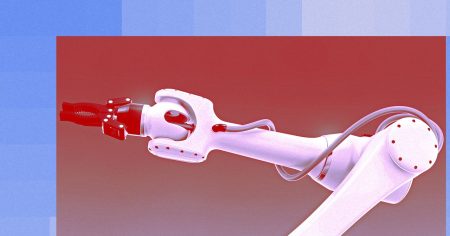Jesse Corn, CPO Zivian Health, is a digital health executive and health tech founder with over 14 years of experience in digital solutions.
It has been widely reported how the pandemic accelerated stress and workloads on healthcare workers and organizations. While medical professionals have shown incredible resilience, they are not invincible. Staffing shortages, inaccessibility to proper care and employee burnout are real, undermining the core of patient care.
In a recent survey, nearly one-third of nurses reported that they plan to leave their current direct patient care jobs in the next 12 months due to burnout, with most leaving the industry altogether. The U.S. Bureau of Labor statistics highlights the staffing shortage crisis by pointing to the 1.8 million job openings in healthcare annually, which has grown almost 40% and is much faster than the average for all other occupations. On top of that, nearly two-thirds of the primary care health professional shortage areas in the United States are in rural communities.
No silver bullet can solve all the problems in the healthcare industry, but I believe that the following four digital strategist and their related tools can help address many of these challenges head-on so medical experts can focus on their core competencies.
1. Automation: The Unsung Hero Of Administrative Workloads
Most healthcare staff, including nurse practitioners, physician assistants and doctors, are entangled in a web of administrative duties that consume valuable time. The latest data shows medical staff are spending less of their time on direct patient care and more on administrative tasks.
The solution can be found in resources that help automate processes like claims, appointment scheduling and discharge instructions. Specifically, automation that I help innovate and find helpful is the tracking of credentials, regulations and compliance for healthcare workers. Government regulations locally and nationally change frequently, so having an automated compliance engine can make this one less thing for a health organization to worry about.
2. Interoperability: Accessible Data For Better Decision-Making
One of the greatest challenges healthcare organizations face is managing the colossal amount of data generated daily. Deciphering this data to make informed decisions is often cumbersome, especially when it is fragmented across various platforms.
While cloud-based electronic medical records (EMR) solutions enable seamless data integration and real-time analytics for evidence-based decision-making, the data must be accessible across systems for the true value to be realized. This would contribute to fewer errors, better patient outcomes, real-time record updates and a more focused healthcare team—especially when collaboration between primary healthcare providers and specialists is necessary from various systems and locations. Health enterprises can scale quickly with new service offerings that help to bolster interoperability since there will be less disparity between data ecosystems.
3. Telemedicine: Quality Care Beyond Physical Limits
Telemedicine, already rising before the pandemic, has become an indispensable tool for healthcare providers. According to AMA, approximately 25% of patients used telehealth in 2022, compared to 5% who accessed online health services pre-pandemic. I believe that telemedicine offers a more manageable and flexible work schedule to aid medical professionals nearing burnout. Patients can receive quality care without requiring the physical presence of a healthcare professional, making efficient use of limited staffing resources.
One of the latest ways telehealth is being implemented is with nurse practitioners and physician assistants, who are often required to collaborate with specific physicians in a specialty area but aren’t located nearby. This is especially vital for the approximately 77% of rural counties in the United States that are considered medical deserts. Online communication technologies can help connect medical experts quickly and efficiently, enabling better patient care and collaboration.
4. Outsourcing: The Key To Core Competency
While technology can handle numerous tasks, there’s always a limit to what can be automated or made virtual. Outsourcing can effectively fill this gap. Many healthcare organizations are now outsourcing services such as billing, coding and even diagnostic analyses to third-party experts who specialize in these areas.
This strategy allows medical staff to focus on the patients without being distracted by administrative tasks. According to one study, 61% of healthcare providers plan to outsource revenue cycle management tasks such as billing, claims and collections.
Digital Solutions For The Healthcare Crisis
The ongoing healthcare crisis has highlighted the vulnerabilities in our healthcare system, but it has also accelerated technological advancements that can mitigate these challenges. By embracing technology and digital tools, I believe that healthcare organizations can alleviate staffing shortages and burnout as well as improve access to proper care.
I find that adopting these types of technologies is becoming a necessity for a more scalable, compliant and focused healthcare ecosystem. By outsourcing non-core functions, organizations can create an environment where medical professionals can excel in what they do best: focusing on the patients to save lives and improve health outcomes.
Forbes Business Council is the foremost growth and networking organization for business owners and leaders. Do I qualify?
Read the full article here










